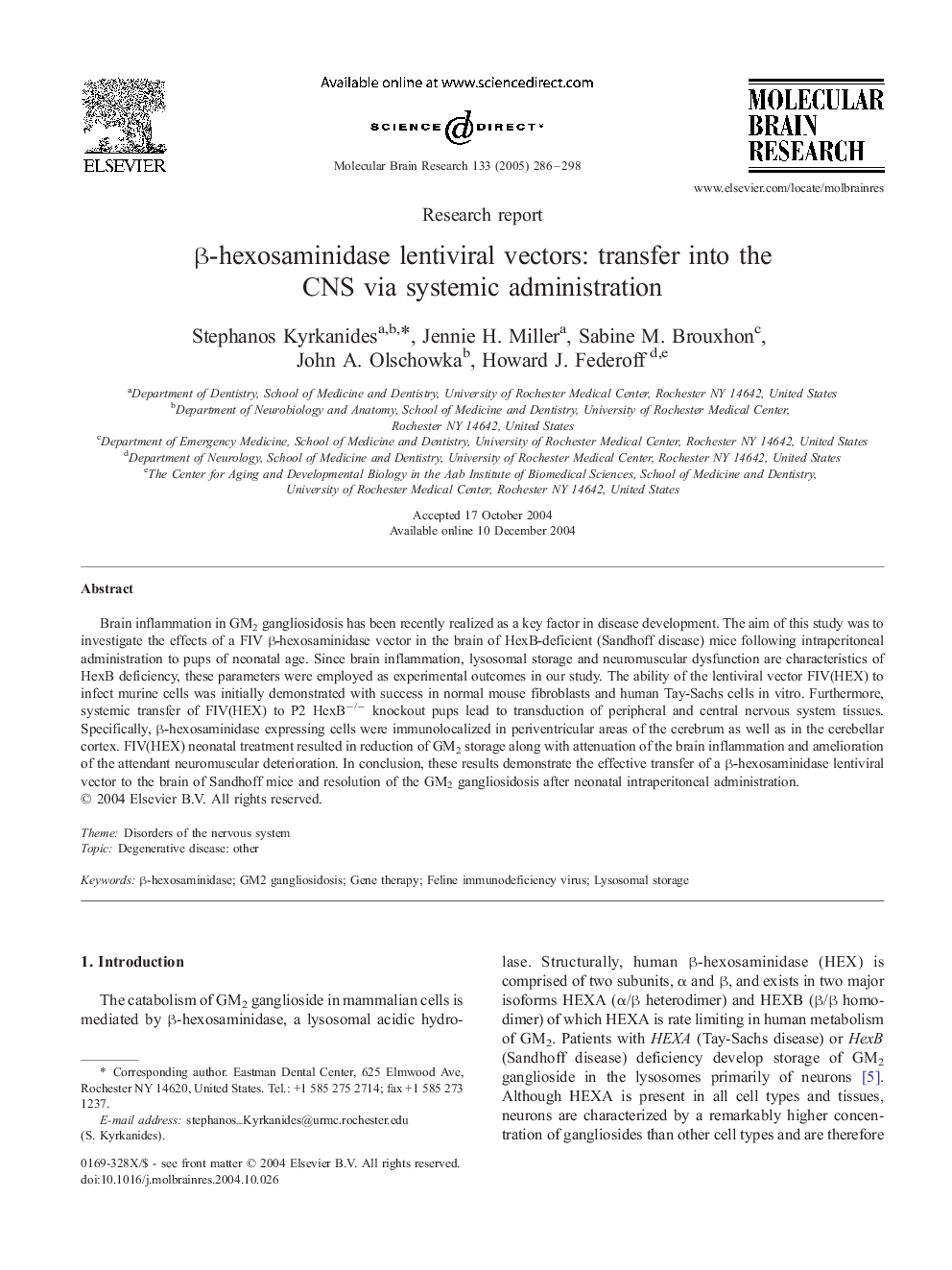| Article ID | Journal | Published Year | Pages | File Type |
|---|---|---|---|---|
| 9410804 | Molecular Brain Research | 2005 | 13 Pages |
Abstract
Brain inflammation in GM2 gangliosidosis has been recently realized as a key factor in disease development. The aim of this study was to investigate the effects of a FIV β-hexosaminidase vector in the brain of HexB-deficient (Sandhoff disease) mice following intraperitoneal administration to pups of neonatal age. Since brain inflammation, lysosomal storage and neuromuscular dysfunction are characteristics of HexB deficiency, these parameters were employed as experimental outcomes in our study. The ability of the lentiviral vector FIV(HEX) to infect murine cells was initially demonstrated with success in normal mouse fibroblasts and human Tay-Sachs cells in vitro. Furthermore, systemic transfer of FIV(HEX) to P2 HexBâ/â knockout pups lead to transduction of peripheral and central nervous system tissues. Specifically, β-hexosaminidase expressing cells were immunolocalized in periventricular areas of the cerebrum as well as in the cerebellar cortex. FIV(HEX) neonatal treatment resulted in reduction of GM2 storage along with attenuation of the brain inflammation and amelioration of the attendant neuromuscular deterioration. In conclusion, these results demonstrate the effective transfer of a β-hexosaminidase lentiviral vector to the brain of Sandhoff mice and resolution of the GM2 gangliosidosis after neonatal intraperitoneal administration.
Keywords
Related Topics
Life Sciences
Neuroscience
Cellular and Molecular Neuroscience
Authors
Stephanos Kyrkanides, Jennie H. Miller, Sabine M. Brouxhon, John A. Olschowka, Howard J. Federoff,
